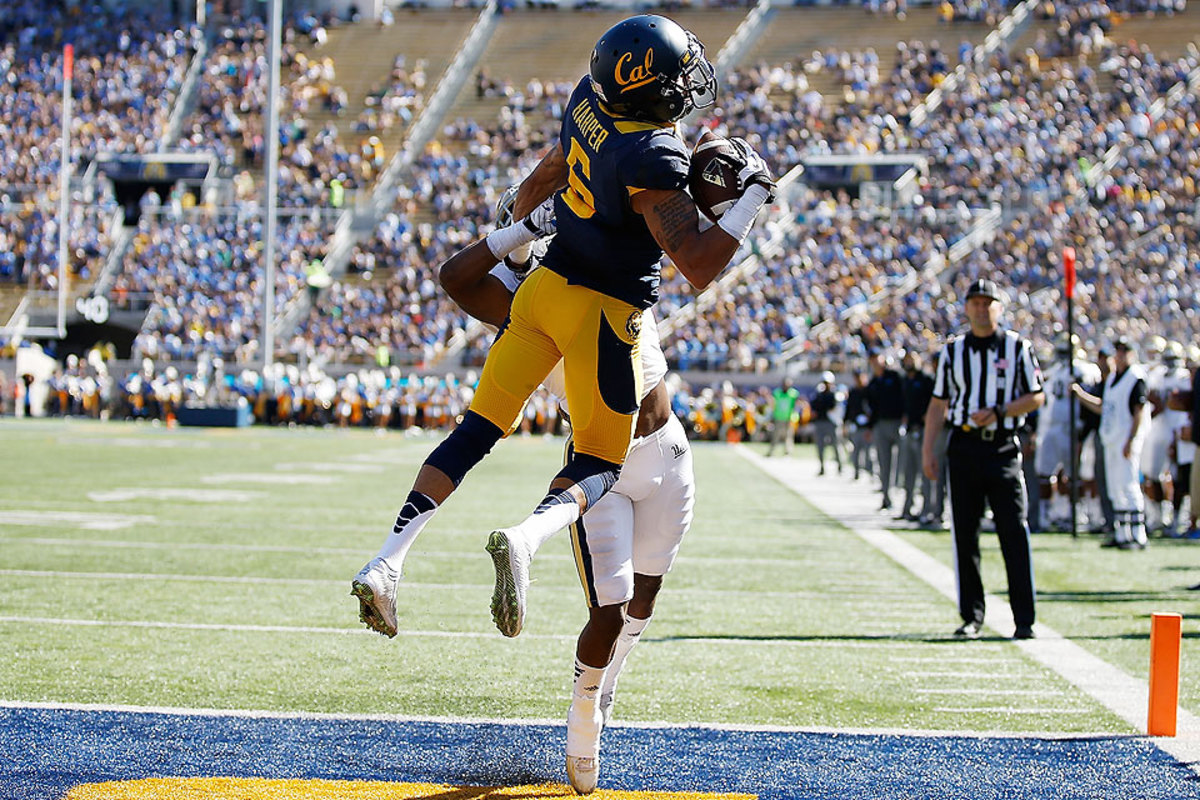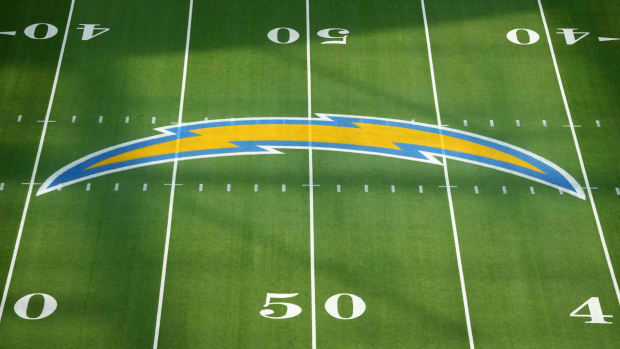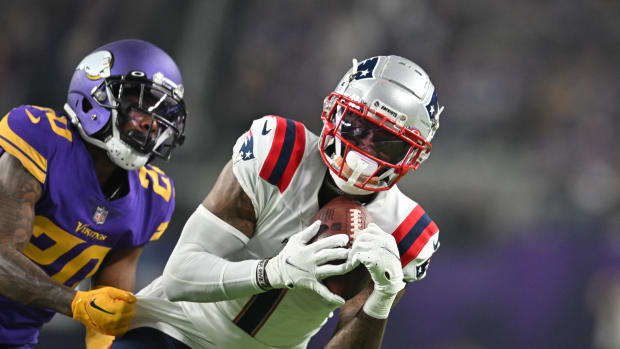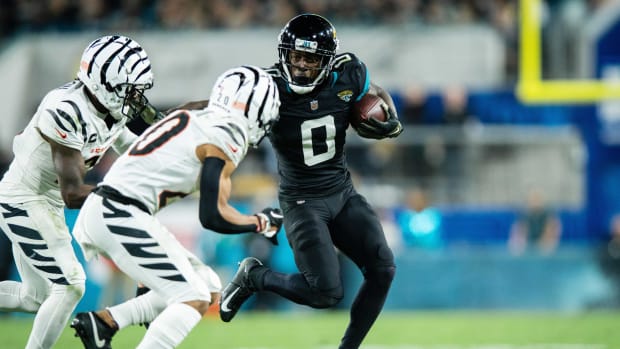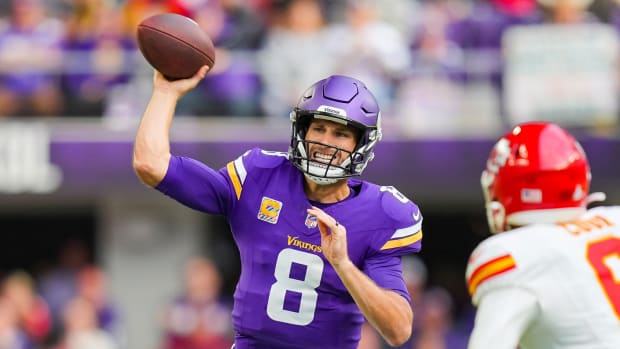T-Minus 77 Days: The Reality of a Combine Snub
This is the Crespi Carmelite High School edition of the draft countdown, as we examine two pivotal decisions made by a couple of high school teammates that led them to the 2015 draft. The first is a junior member of an endlessly talented wide receiver class that experts think will yield at least four first-round picks. Chris Harper is not one of those four.
The Cal product made a “game-time decision” to declare for the draft after seeking advice from family, friends, and mentors including former Cal coach Jeff Tedford and former NFL receiver Keyshawn Johnson. He was fresh off a junior season during which he caught 52 balls for 634 yards and six touchdowns, and this ridiculousness and also this, which is just silly.
And yet, Harper wasn’t invited to the combine in Indianapolis to be among the 330-plus prospects who participate in Olympic and football-inspired non-padded drills, aptitude tests and interviews. For those who grew up in a world in which the combine is broadcast on NFL Network and high schoolers are quicker to brag on 40 times than touchdowns, that’s a tough pill to swallow.
“I watched since I was a little kid. It was a dream to go,” Harper says after a day of training at Proactive in Westlake Village, Calif. “I’ve just got to keep working hard. I think it's extra motivation at this point.”
Harper was one of 74 underclassmen granted eligibility, down from a record 98 early entrants a year ago. Several of those guys find themselves on the street less than a year later, including Brett Smith, whom I wrote about and who is now under contract with the San Jose SaberCats of the Arena Football League. Smith was counting on the combine after three years at Wyoming and didn’t get invited. In response to the scourge of juniors at its gates, the NFL simplified its advisory committee's response to players’ requests for a prospective draft grade. Instead of telling a player he could go between rounds 4 and 7, the committee now writes back that the player “should remain a student-athlete, maturing as a potential pro prospect while continuing his education.”
So, naturally, the league got fewer requests. The number dropped from 214 in 2014 to 149 in 2015. Harper figured he might as well not ask.
The LB Who Couldn't Hit
Washington’s Shaq Thompson spent the past three seasons proving he’s capable of just about anything on the football field; he’s a likely first-round pick in this year’s draft. But the first time he went pro, as a centerfielder, he proved to be anything but a can’t-miss prospect, Emily Kaplan writes.
FULL STORY
“I knew I wasn’t a first- or second-round pick, and I didn’t want to hear them tell me to go back to school,” he says.
So here he is, training for a regional combine and then a pro day just like many snubs before him. Chargers running back Branden Oliver was one such snub a year ago, coming out of the University at Buffalo. Like Harper, in middle school he would come home and park in front of the television during combine week to watch the glorified workouts. To this day he remembers Ronnie Brown’s 40-yard dash time at 233 pounds down to the hundreth of a second: 4.43. In the weeks leading up to his own combine, Oliver called the NFL and was put on hold. No, they said, he didn’t make the cut for an invite. Last season as a rookie he rushed for 582 yards and four touchdowns.
“I was always one of the kids watching the combine. I thought I would get an invite but that didn’t happen,” Oliver says. “I think the 40 is what guys stress about. They think if they run a good 40 I’ll be alright. And sometimes that is the case, and sometimes it isn’t.”
Harper’s agent, Jerome Stanley of Safe Sports Management, considers the whole tradition bloated and overblown. Stanley believes the NFL is at fault for inflating the importance of the combine in the minds of fans and young athletes. What’s more, he doesn’t understand why the process of choosing the invitees is shrouded in such secrecy.
“It’s one of those things that is what it is because it’s been what it’s been,” he says.
In 2011 he had an incoming rookie client who started at linebacker for USC who also grew up watching the combine. When he didn’t get an invite, he was devastated. He fell into a serious funk bordering on clinical depression. Stanley encouraged him to look forward to his pro day, but the linebacker wouldn’t hear it. Eventually, Stanley resigned because he felt the client would forever associate him with a failure to reach the combine, and he didn’t want to stagnate the young man’s career.
The rookie? Seahawks linebacker Malcolm Smith, Super Bowl XLVIII MVP.
Better Know a Prospect
You know Jameis and Marcus, Amari and Melvin. Every week in this space, we’ll introduce you to a lesser-known prospect of interest with whom you should become familiar…
Bryan Bennett was a senior in 2010 at Crespi Carmelite in Encino, Calif., when Chris Harper was just a sophomore. The four-star recruit fielded offers from Boise State and Pitt before signing with Oregon, only to have the younger Marcus Mariota beat him out for a job in 2012. While Mariota continued his ascent to the top of the upcoming draft, Bennett mulled his choices in December 2012. Like many of the country’s top prep QBs, he was a devout Manning Passing Academy pupil, so he went to the Godfather of American quarterbacking for counsel.
Bryan Bennett (Ronald Martinez/Getty Images)
“When I was going through the process, I was talking to Archie Manning a lot for advice,” Bennett says. “He told me those coaches at Southeastern Louisiana were good and some good things about the program. After I got that from him I began talking with them.”
Southeastern Louisiana? Really? Oregon and new coach Mark Helfrich wanted the 6-3 Bennett to switch to an ‘athlete’ role that would have afforded opportunities to carry and catch. But SLU wanted him to throw, and because it was an FCS program, he wouldn’t have to sit out a year to play. Friends texted him incredulously. Even students at SLU mocked him in line at the cafeteria or on the way to class.
“Some people at the school were like, why’d you come here?" he remembers. “I know the success hadn’t been high, but talking with the coaches and players I believed in it, and we got a positive vibe there and made it work.”
Bennett helped give Hammond, La., something to brag about: Two Southland Conference Championships and its third-ever alum invited to the NFL combine. He led the team with 1,046 rushing yards and 3,165 passing yards in 2013, but his accuracy and production dipped in 2014 as he dealt with nagging injuries and the departure of a coordinator (Greg Stevens left for a coordinator post at Eastern Illinois).
Bennett’s been working on improving his footwork mechanics, among other things, at EXOS in Carlsbad, Calif. He holds no grudge against the decision-makers or his teammates at Oregon, but holds out hope that he and his buddy Mariota will meet again on a football field.
“Whenever I got the chance to watch those guys I rooted for them and wanted to see them have success," he says. "I wish it would’ve went differently, but I had to move on. I do imagine that one day we’ll end up playing against one another one way or another. A situation like that would be fun.”
(Joe Robbins/Getty Images)
Draft Season Do-Over
Every week, we’ll ask a current NFL player what he would have done differently in the time between his final collegiate game and the day he was drafted…
Tennessee Titans cornerback Jason McCourty (2009, Round 6, pick 203). "Choosing an agent. I feel like I went through all the necessary due diligence and went through the process of talking to them all. But the agent and I just didn’t jell, and I ended up firing him that season. He wasn’t a bad guy or a bad agent. We just didn’t match up personalitywise. I was around my brother’s agent that year and saw the difference in how he was treated. I would recommend before anybody picks an agent to contact a player or two whom the agent represents. If the agent has lost clients, go talk to one of those guys who left. That may give you some insight on why they didn’t like him. Somebody may even dislike an agent for the same reason you will like the guy. There’s a temptation to say, Oh, Mom doesn’t know anything about football. But it can help to introduce the agent to someone in your circle who is a good judge of character."
Quote of the Week
“All these people were praising [Winston]… and calling me a slut, a whore. I kind of just want to know… why me? It doesn’t really make sense.”
—Erica Kinsman, who accused Jameis Winston of rape while at Florida State, in a tell-all documentary by filmmaker Kirby Dick. Charges were never filed against Winston.
Stat of the Week
I usually think the combine is a worthless exercise (save for the interviews), but there’s something to be said for the raw workout numbers and how they help us understand the changing nature of the sport at all levels. Below you’ll see the median number of bench-press reps of 225 pounds executed by combine outside linebackers in a given year, followed by the median shuttle time for that year’s group.
Year | Bench | Shuttle |
2005 | 22 | 4.13 |
2006 | 23 | 4.22 |
2007 | 24 | 4.32 |
2008 | 23 | 4.41 |
2009 | 24 | 4.34 |
2010 | 24 | 4.34 |
2011 | 23 | 4.34 |
2012 | 22.5 | 4.31 |
2013 | 22 | 4.31 |
2014 | 22 | 4.21 |
As I noted last season in a piece highlighting the myriad contributions of Lions linebacker Deandre Levy, outside linebackers and linebackers in general are getting smaller while every other position gets bigger. Correspondingly, emphasis at all levels is shifting to lateral agility and the ability to cover ground quickly, skills that the shuttle drill is meant to evaluate. As always in the sport, the offense dictated the change. Bill Belichick fielded two monster pass-catching tight ends in 2010 (Rob Gronkowski, Aaron Hernandez), and everybody freaked. The field of college linebackers, who were already trending smaller, was closer scrutinized by NFL scouts looking for fluid hips and cover skills. It’s all in the numbers.
Scorching hot take of the week
The runner-up:
And the winner:
The Adieu Haiku
Haikus remain wack.
Follow The MMQB on Facebook, Twitter and Instagram.
[widget widget_name="SI Newsletter Widget”]
































